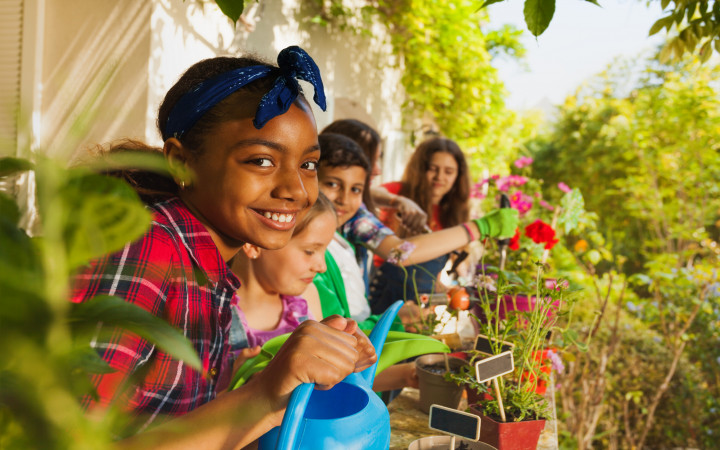Today’s Wonder of the Day was inspired by Wonder Friend. Wonder Friend Wonders, “Can You Garden in the City?” Thanks for WONDERing with us, Wonder Friend!
Over seven billion people call Earth home these days. Feeding all those hungry people is no small task. Fortunately, scientific advances have helped to modernize agriculture to the point where billions of pounds of food can be produced year after year.
Intensive agricultural use of land takes its toll on Earth's resources, though. From demands on the land and bodies of water to pollution associated with chemical fertilizers, it can be a challenge to maintain the health of Earth as we seek to maintain the health of its peoples.
Today, many people have started to take a greater interest in where their food comes from. Rather than eating food that has been shipped hundreds or thousands of miles, many people now prefer locally-grown foods. Not only do local foods result in less pollution from shipping, but they're also fresher and taste better.
A desire for fresh, local foods has led many people to create their own gardens to grow their own food. If you've ever seen a corn or soybean field, you know that most farms that produce food are quite large. That's why they tend to be out in the country where large tracts of land are available. What are people who live in cities to do?
As many people who have tried urban gardening have learned, you don't have to own a tractor or thousands of acres of land to grow your own food. Using new and creative techniques, you can easily create vegetable gardens in the city.
In the urban environment, land can be scarce. Large, open spaces can be few and far between and larger tracts of land can command a premium price for other uses, such as housing and business development.
If you live in a city and have a backyard, you're set. Even the smallest patches of land can be developed into thriving vegetable gardens. You simply have to set reasonable goals for the land you have to use. You might not be able to grow enough vegetables to feed hundreds, thousands, or millions of people, but you can probably grow enough food to make many meals for your family.
If you don't have a backyard or access to even a small patch of land, don't fret. You can still grow vegetables in containers. Even a simple windowsill is large enough to host small containers full of herbs. Larger containers, such as five-gallon buckets, can be used to grow a wide variety of vegetables, such as tomatoes, potatoes, lettuce, beans, peppers, and cucumbers.
Where would you put the containers? Take stock of your environment and find a suitable place. Windows, patios, balconies, decks, and even rooftops that get at least six hours of sunlight each day make great spots for containers of vegetables to grow. In large cities, such as New York City, you'll find many rooftops that have been turned into thriving gardens that produce a bountiful supply of vegetables each season.
So, if you want to grow your own vegetables, think outside the farm! Evaluate the land and spaces available to you and make the most of them! You won't regret getting your hands dirty, raising some homegrown food, and feeling more connected to Earth.




